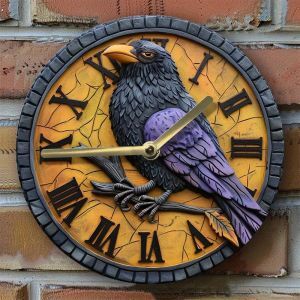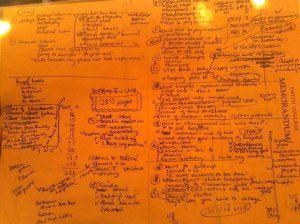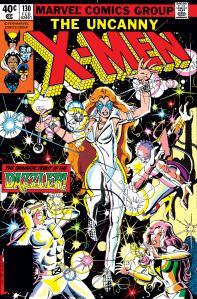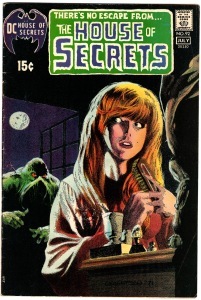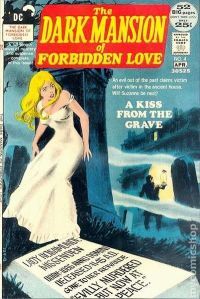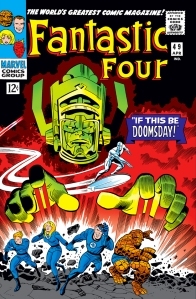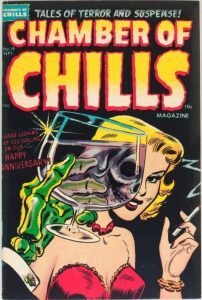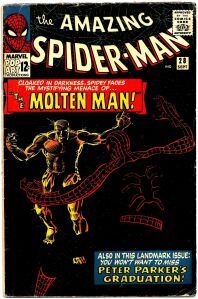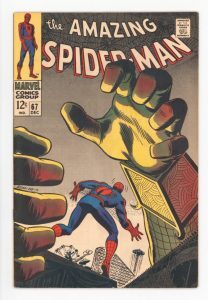Michael S. Fedison's Blog
January 19, 2025
The Power of Moments (Or, Memory Is the Lifeblood of Our Lives)
It has certainly been a while. Thank you to everyone reading this, still checking out this blog! I appreciate it more than I can say. Months have passed, and I’ve reflected a bit on life, on meaning, on what matters. Winter, especially in frigid Vermont, lends itself to such reflections.
I’ve always been intensely aware of the fleeting qualities of life, the way time is always moving forward, inexorably, like water sluicing through the landscape of what we call reality. As soon as a moment arrives, it is gone, vanished on the wind like smoke. As you read these words, this sentence . . . as soon as you do, the moment will be gone. The electrical energy in your brain will have processed the words, digested them, interpreted them, and will have moved on to the next sentence. Such is life, over and over and over again. Everything is fluid. There is no stasis, no stoppage. Every second ticks away, replaced by the next one and the one after that and the one after that.
What, then, is the meaning of it all? If everything is always shifting, if 99 percent of our lives are forgotten–poof!–as if they never happened, what does it all mean? Think about it. What were you thinking at 6:03 a.m. this morning? Yesterday morning? When you saw someone on the subway last night–nothing extraordinary–just a random person on his way home–what happened? What were you thinking? Do you remember? Or does the scene blend into the background, like virtually every second of our day-to-day existence, washed away in a fog of kinetic energy, of moment upon moment occurring, happening, moving forward, an endless array of events and thoughts and sights and sounds and dreams and tasks . . . a barrage that never stops?
What does it all add up to? If we can’t remember the vast majority of our own lives, what does it mean? I return to moments . . . memories. The things we do hold onto. The remembrances that are still there . . . living things, real emotions, pounding like a heartbeat in our minds and souls. That time your friend stood up for you on the playground. So many years ago! And yet . . . and yet . . . if you close your eyes, if you allow your mind to transport you through the chasm of decades . . . you are there! You can smell the woodsmoke in the air, emerging from the neighborhood to the north of the playground. You can taste the fragrance, the essence, of autumn that day. You can hear the crow cawing as it flies overhead. You can see the silhouette of your teacher in the distance as she observes her class at recess. And you can feel the emotions you felt . . . when the bigger kid started to pick at you, make fun of you, demean you. You can feel the helplessness that crept up your spine, like a cancer. You can feel the urge to cry, and the determination not to. And then . . . you can see your friend step forward and put that bully in his place. You are there. You are present. This memory is more alive than the many tasks you did yesterday or this morning. They have already blended in to the shapeless mass of background noise that constitutes nearly all of our past experiences. This memory, this event that you lived through, decades ago . . . it is real. It is for all time. It will live in you for the rest of your life.
How many memories of this nature do we carry within us? Permanent ones–moments that we’ll always remember, always be able to revisit, anytime we want. (Or don’t want.) Hundreds, maybe thousands. They are a tiny fraction of our lives, which are made up of countless moments, layer upon layer, growing every second of every day we are here. But these precious few, these eternal remembrances of times past–even the bad ones–they shape who we are, they speak to us at a cellular and spiritual level. They are echoes of what once was, and will always be. They make us understand that not *everything* is here today and gone tomorrow. Some things endure. Some things last and are there for us to reflect on and write about and share. They are there to remind us that we have lived. Life has happened. We are more than just the sum of the seconds of our frenetic and fast-paced days.
And this is the meaning. This is what matters. Hold on to your memories. Your experiences. The people you loved. The games you played. The tears that fell. The dreams that were dashed. All of it.
We exist in uncertain times. Countries lose their way. Democracies die, buried under lies and apathy and feckless cowardice. But we, as people, as individuals, as sentient beings with souls and hearts and minds. We remember. We live.
We endure.
Thanks so much for reading!
–Mike
September 30, 2024
Transitions (But Not Endings)
I am always amazed at the passing of time, the inexorable march of years that move forward with the precision of a finely crafted watch, day after day, month after month, year after year. Father Time never stops. Blink, and it’s next month, next year, next decade. As such, it is sometimes hard to believe I began this blog twelve years ago, in the summer of 2012. At the time, my intention was to write a dozen or so posts, attempting to create a buzz and some interest for my then-soon-to-be-published novel, The Eye-Dancers.
Along the way, an interesting thing happened. I fell in love with the blog, the creation of posts, and, most importantly, I grew to deeply appreciate the WordPress community. Truth be told, you are the reason I’ve been posting as long as I have. For some time now–at least a couple of years–I’ve felt my blogging well running dry. Which is to be expected. Again, when I started, I thought I’d write maybe twelve posts–perhaps a few more than that. But a very limited number. I never intended for this to morph into a years-long labor of love. But it did. Quickly, I realized, I was in it for the long haul. And as the years passed, I wrote less and less about my novel and simply used the platform to discuss writing itself, to explore certain themes and memories and passions. But, in time, that well, too, began to run shallow.
And so here we are today. I am not ending The Eye-Dancers blog. Far from it. I’ll still be here. And I will still post from time to time. This is not the deep-sixing of this website.
The change? For the past couple of years, I’ve always posted one blog per month, usually at the end of each month. (Early on in The Eye-Dancers’ life, I was posting multiple times a week!) But now, even that feels like overkill. After all, through the years, I’ve written at least one post per month on this site for a dozen consecutive years! There are many, many hundreds of posts on here, some quite lengthy–all stemming from an initial endeavor to write a dozen or so. All that to say, these days, even after the passage of a month’s time, as the appointment to write a new post nears, I often find myself at a loss. What to write? What to say? The result has been some progressively uninspiring writing that, more and more, seems to say the same thing, month after month. The blogging well, indeed, has run dangerously low.
But not entirely dry. I am sure there are posts for me still to write. They just won’t be on a monthly schedule. They won’t be on any schedule at all. Some months, I may write two. Then there might be several months that go by with none. It will, literally, be based on what the blogging muse had in store for me. But feeling like I have nothing new to say in any given month and then reexploring a theme I’ve blogged about dozens of times before, just to keep my decades-plus-every-month streak going, feels increasingly hollow. I want my posts to be inspired and meaningful, not rote and obligatory. And so, from this point on, there won’t be any schedule at all. I will post whenever I have something meaningful, fresh, and worthwhile to contribute, however often–or infrequent–that might be. And who knows? It may still be once per month. Time will tell.
The number-one reason, by far, I have lasted on this platform all these years is you–your readership, your virtual friendship, the wonderful interaction down through the years. I cannot thank you enough. And I will continue to post when the muse visits.
Thank you, as always, for all these years, for reading!
–Mike
August 29, 2024
Home Ain’t What It Used to Be . . . But It’s Still Home
Tomorrow, I’ll be heading “back home” to Rochester, NY, and the house where I grew up. It’s something I’ve done every year over Labor Day weekend for three decades–ever since I moved away from the old place, really. And, every year, it’s a small chunk of time I circle on the calendar–something to look forward to. Something to cherish.
This year is no different. I am eager to go, and will surely take a couple of days and enjoy some much-needed R & R. Upon my return to my present home in the hills of east-central Vermont, I’ll resume the day-to-day schedule of bills, repairs, deadlines, deadlines, and more deadlines. Which is a good thing–don’t get me wrong. It’s good to be busy.
In years past, my excitement level for the trip back home was high–sometimes so high, I’d count down the days beginning in May or June. “Eighty-four days till my trip; seventy-three days; forty-two days . . .” Like a kid counting down to Christmas morning during the weeks preceding its coming. And while I am looking forward to the trip this year, too, it is not quite with the same gusto, the same species of fervor and anticipation. It is now like Christmas for adults–still a special day, but no longer something to be anticipated with the euphoria of children.
The reason for this slight muting of my old excitement levels is, simply, the passing of time, and the passing of my parents. My mother passed in 2018; my father earlier this year. This will be the first time I “go back” to my childhood home without either of my parents there. The house is still in the family; it’s still home. But the heart of the home, the essence, has been ripped away, torn asunder. It is but a shadow of what it used to be. It can never be the same.
Perhaps that’s good, in its own way. Time passes. Decades come and go. Even if we sometimes don’t want to, life on Earth forces us to grow up, move on, mature. Nothing remains stagnant. Everything is moving and changing and racing, all the time, like water rushing downhill to the sea. There is no holding it back.
But it’s hard. And, in a way, some things are permanent, eternal. Unchanging. The house where I grew up contains within its walls, under its roof, memories and moments that live on–in my soul and, sometimes, in the stories and blog posts I write. When I arrive there this weekend, I will experience these memories powerfully. I’ll close my eyes and look back across the span of thirty years, forty years. I’ll see a little kid–me–and his parents, talking, living together in the old house situated right at the center of the block. I’ll remember specific moments, conversations, games, sadnesses, dreams, joys, events. They will feel close, present. Real enough to reach out and grasp.
I expect to stroll through the house late at night or early in the morning, the only one awake, And experience it all. In that moment, I will feel the sting of loss, of impermanence, of life’s brutal command that we move on and forward. Always forward. Leaving the past further and further behind in our personal rearview mirror as we walk along the highway of advancing years.
But I’ll feel something else, too. I’ll feel that, at the soul level, at the heart level, there is no such thing as time, at least not in the way we measure it here. I’ll feel the enduring reality of love, of things precious beyond words, events and memories and moments and people that live on, always. Nothing, truly, is ever lost.
So, yes. Home is no longer the same. It has been stripped down to the studs, as it were. The heart of the place has been removed . . . but only on the surface level.
At the deeper level, it remains what it’s always been. And for a couple of days this weekend, I’ll step into that.
And I’ll remember.
Thanks so much for reading!
–Mike
July 31, 2024
Little Moments, Big Memories (and Literary Nuggets)
Days pass, hour by hour, second by second, in a never-ending sequence of motion and transience. The moment we pause to reflect on what is occurring, it is already in the past, a blip on the ticker tape of life, the newsreel that never stops, always moving, inexorably, ahead.
With such an impermanent reality, it is natural, even necessary, to remember, to recall past events, the feelings we had, the epiphanies, the conversations–good and bad, big and little. For me, I remember so many little things, routine matters that wouldn’t strike others as exceptional in any way and yet . . . they endure–in my mind, in my heart, and in my soul. Why I hang on to some memories that can only be labeled as trivial, I do not know. Something about them, even at the time they occurred, struck me as significant, meaningful, enduring. And so they persist in my memory, living things, often brought into focus through writing and story.
A post like this can contain the actual memories, of course, but in fiction, we keep the kernels of truth while altering the details, transposing our feelings and memories onto our characters. But this is no less genuine, no less actual. It is our memories and experiences coming alive through the worlds and characters we create. Small moments from our past, but, hopefully, big and universal literary themes.
In The Eye-Dancers, a large assortment of my childhood memories and experiences found their way into the story. Bits of dialogue, inside jokes, musings, games . . . memories. It was a joy to share those within the living domain of a novel. And one of those memories, my love of comic books, was especially evident in the character of Mitchell Brant. Mitchell–who collects vintage comics and escapes his loneliness and social awkwardness in the wonders of the hobby.
It makes me think of myself and my friends in the 1980s and 1990s, growing up in Rochester, New York, in those days just before the coming of the World Wide Web, when, to buy comic books, you had to go to the comic book shop. And we did.
When I entered the shop, I was overtaken by the scent–that old comic book smell, which Mitchell waxes poetic about in The Eye-Dancers. He is speaking for me, of course–nothing fictional about that aspect of the novel! It’s a musty smell–old paper and ink–earthy, distinct, magical. To this day, when I crack open an old comic that was published before I was born, it takes me back to the old comic shop at the corner of Langslow and Mt. Hope, on the south side of Rochester–across from the sprawling Mt. Hope Cemetery and within just a few blocks of Highland Park, home to the Lilac Festival each spring. Magical, indeed.
Sometimes my friend Matt (who created the covers for both The Eye-Dancers and The Singularity Wheel) would join me on the sojourn to the comic shop. He was always looking for a deal. He’d flip through the dollar bins and complain to Jim, the proprietor, about the prices. “How can you charge a buck twenty-five for this issue?” he’d say, pulling out the offending comic. Jim would give it right back, explaining that he had overhead, running the shop, and besides, it was a dollar twenty-five! Not exactly pricey, even in the 1980s. Matt was undeterred, proclaiming the price should be a flat dollar. They’d go back and forth for fifteen minutes arguing over that quarter. Sometimes Jim would relent and give Matt the comic for a dollar. Sometimes he’d hold firm. I can still hear them in my mind’s ear, arguing, pressing, competing to gain the upper hand.
I am currently working on a new novel (just beginning it, actually). It’s a coming-of-age story that takes place in the 1980s, and the thirteen-year-old protagonist is indeed a comic book fan who frequents the local comic shop. And, knock on wood, if I am able to finish the novel and if you happen to read it one day, you will come across a scene in the comic store where the protagonist and his friend are shopping and the friend bickers with the proprietor about prices. And you will know where that scene originated.
Our lives are shifting, refusing to stay put. Trying to grasp onto any singular moment is like attempting to catch the wind in the palm of your hand, to grasp a breath, a bird call floating away among the pines, a billow of smoke rising from the chimney against a deep blue autumn sky. It cannot be done.
Except in story. We can recapture and preserve, as if in amber, our feelings, our experiences, our memories–even the small ones. Especially the small ones. They form the essence of who we are and what we’ve done.
They are worthy additions to any stories we write.
Thanks so much for reading!
–Mike
June 30, 2024
Story Meld (Or, Finally, Maybe, Hopefully, I Have Something to Write!)
A few months ago, I mentioned I had the genesis of a new novel–finally. After quite a dry spell since finishing The Singularity Wheel. Excited, I dove in and crafted a couple of chapters. But then . . . deflation. I realized pretty quickly that I didn’t have the kinetic energy necessary to continue on with a long writing project. If, after only two chapters, I felt myself petering out, what chance did the story have?
Admittedly, these feelings can sometimes be misleading. Maybe we’re having a bad day or a bad week. Maybe we’re tired. Maybe, for some reason, completely unrelated to the WIP, we’re just not in the mood to write. As such, I didn’t make any decisions for a solid month. I wanted to give the fledgling novel every chance I could before calling it a day. But, after the month had elapsed, I realized I had even less zest to keep going. The idea no longer energized me–it didn’t pop. It lacked the one thing a novel must have if you are to write it–the ability to captivate its author. If you as the author aren’t invested in your own story, your readers certainly won’t be.
And so I made the easy, and yet difficult, decision to quit writing the story. It was the right choice, but it left me where I’d been before starting it–story-less, no novel-length projects to work on. It had been too long. Would I ever write another novel? Or had the well run dry–something I had always feared might happen someday. Had that day arrived?
I took a step back, thought it over, tried to force a couple of ideas–but that never works. You can’t tell yourself to write a novel if you have no idea, no vision, no characters who move you and urge you to carry on, with an inertia and a force that is irresistible and inevitable. At least I can’t. That’s what I’d just tried! It would never work.
What, then? Just sit back and wait for inspiration to strike? What if it never did? While I couldn’t force a story as it were, I could perhaps give myself some momentum, pouring literary lighter fuel onto my creative spirit. So I read some Ray Bradbury, who always motivates me. Watched a couple of my favorite Twilight Zone episodes, revisited some old comic books; read Truman Capote and Harper Lee and other personal favorites.
Nothing happened at first–no epiphanies, no “aha” moments. But I could feel a turn in my creative soul. The dormant muse was stirring, if gently, quietly, with a whisper, not a shout. But there was movement. Something had shifted.
I began to think of other novel ideas I’d had over the past year or two. Like this latest one, they, too, began with a flourish but fizzled as soon as they were tested. But I realized–despite initially feeling upbeat about my recent novel ideas, I never felt stratospheric, never had that sense that I was called to write the story. It was interesting, and got my creative juices flowing. But not enough. Not to the point of needing to write it.
I examined the ideas I’d had–the sparse outlines, the characters, themes, motivations. Might there still be meat on those bones, nuggets that if properly fertilized, might give birth to an idea with legs? I pored over the notes I’d written, the first chapters, the stories that had begun but did not finish. And I began to realize something. While none of the ideas, individually, were strong enough to pursue, melded together, the best ideas of each would-be story might coalesce into one focused narrative that had potential.
I thought it over, made notes, truly got in sync with my passions–what it is I want to write about. Made some changes. Adjustments and additions. Cut some things out. Pulled it all together into a loose, general outline–not a chapter-by-chapter analysis–far from it. Just a one-page overview, hitting key plot points, describing some of the main characters, the themes, the tone, the point of view. Hmm, I thought. You may have something here.
The key was–there was coherence. A resonance with the subject matter and themes. It is a return to coming-of-age, but it also incorporates memories, reflections, social commentary. Everything I want to write about.
Okay, then. Let’s get this party started. It’ll be a slow process. My novel-writing muscles have weakened a bit from disuse. I’ll need to start slowly and gain momentum. But I think I have something with genuine promise. I’ll just need to take it one chapter, one paragraph, one sentence at a time.
Will it be a grand coming-together of important ideas and themes, merging into one powerful, moving narrative? Or will it be a patchwork Frankenstein monster that stumbles to and fro, without direction or focus? Only time will tell. But I will take the plunge hoping for the former.
Writing is not for the faint of heart.
Thanks so much for reading!
–Mike
May 31, 2024
A Short Pictorial Tribute to a Hobby I Love (Or, There Will Always Be a Part of Me Who Remains a Nerd)
Throughout the twelve (!) years I’ve been blogging here on The Eye-Dancers website, I have not shied away from sharing my enduring love for vintage, collectible comic books. Much like Mitchell Brant in the novel The Eye-Dancers, I find comics to hold a unique, inexplicable magic. Vintage issues from the 1940s, ’50s, ’60s, ’70s, and even ’80s are like a pop culture time machine. The characters represent the styles, issues, and zeitgeist of their times, and the ads take you back to decades long gone, but not forgotten.
The stories in the best comic books have always been riveting, enjoyable, and just plain fun. But what defines the medium is its cover art. There is nothing like a beautiful, mesmerizing comic book cover. And so, I have pulled together twelve of my all-time favorite comic covers, ranging from the 1950s through to the 1980s (I have nothing to do with any comic book published after 1994). Some of the issues in this pictorial history I own in my collection; others I do not. Either way, they are all magnificent.
I hope you enjoy the show!
I will number each of the comic books below (one through twelve)–but the numbers do not represent a ranking. They are just present to create a semblance of order to the proceedings. It’s hard to rank these, anyway–they are all unique and beautiful in their own way.
1. The Uncanny X-Men #130 (February 1980).
This issue was published at the tail end of the disco era, and it shows. This is the first appearance of The Dazzler–who is a super-powered being but also a singer! You can easily see the disco theme on this cover.
2. Showcase #79 (December 1968).
Showcase was an anthology title back in the day–it often introduced new characters, some of whom went on to became household names. The character introduced in this issue–the Dolphin–is more obscure, but this is a cover that takes your breath away.
3. Strange Adventures # 95 (August 1958).
There were an abundance of imaginative and creative sci-fi stories in 1950s comic books, and, of course, they often came with sensational covers. Here is one of them.
4. Peter Parker, the Spectacular Spider-Man #101 (April 1985)
Our most recent entry on this list (and still nearly forty years old!) is this sleek black-and-white beauty that truly captures the eye.
5. Moon Knight # 29 (March 1983)
The cover here is like a living thing, ready to devour the viewer. One of my favorites!
6. House of Secrets #92 (July 1971)
Personally, this is my favorite comic book cover of all time. Moody, atmospheric, perfect! Also, a major key issue–the first comic book appearance of the original Swamp Thing.
7. Dark Mansion of Forbidden Love # 4 (April 1972)
There was a revival of sorts in comic books in the late 1960s and early 1970s of Gothic horror themes, spooky, moody tales and covers that originally had taken over the industry in the early 1950s. Back in the early ’50s, though, the comics went overboard and created R-rated gruesome fare that far surpassed anything in the movies at that time. This led to the Comics Code in 1955, which censored the material and removed the gore. By the early ’70s, the Code was weakening. The stories in these early ’70s comics were not as graphic as those of the early 1950s, but they were brooding and gripping. Such as this gem . . .
8. Fantastic Four # 49 (April 1966)
Like Mitchell Brant in The Eye-Dancers, my all-time favorite comic book title is The Fantastic Four, and this beauty right here is one of the best.
9. Chamber of Chills # 19 (September 1953)
Remember that early-1950s, “pre-Code” horror we talked about earlier? Well, here is a classic cover from that era.
10. Batman # 227 (December 1970)
Batman, too, rode the wave of the Gothic, eerie revival in comics during the early 1970s, and no Batman cover illustrates that more than this exquisite masterpiece–one of the most sought-after issues for vintage collectors.
11. Amazing Spider-Man # 28 (September 1965)
This cover is the very definition of “mood” and “impact.” A true classic.
12. Amazing Spider-Man # 67 (December 1968)
Two Spider-Mans to close out the list! Spider-Man consistently had top-notch covers. This is just one of many.
Well, there it is. A small pictorial essay of a hobby I love and some of the covers I consider to be the best of the best. I hope you enjoyed this little walk down pop-culture memory lane.
Thanks so much for reading!
–Mike
April 30, 2024
“Yeah, But . . .” (Or, Fighting Back Against the Self-Doubts That Keep You from Writing)
Imagine this scenario. You’re out at a restaurant with some friends–people you haven’t seen in a while. You’re catching up, swapping stories, sharing the happenings of the past few weeks. The food arrives. Not bad. Not bad at all. Good conversation. Good food. A fine evening.
And that’s when it happens. Two tables down, a young couple are eating their meal, their eyes darting to and fro from their plates to their two young kids, back to their plates, back to their kids . . . Speaking of whom . . . the kids are antsy, hyper, fidgety, their half-eaten meals picked at but no longer being touched. You overhear some of the chatter–the parents telling the kids to keep quiet, the kids snapping back, eager for a verbal sparring match. The young couple appear tired, exhausted even, while the kids are endless, boundless energy.
It makes you wonder. What’s the backstory? What was their week like? What lies ahead? Why even bring the kids along–why not get a babysitter instead? You observe the couple again–the color of their hair, the shape and contours of their faces; the dimple on the man’s chin–such a prominent feature, it is easily observed from two tables away. There is a tension, too, subtle, beneath the surface, something undefinable yet as real as the food on their plates.
As your friends talk, your mind wanders. You nod at the right moments, your facade of listening holding steady, for now. But you are fully absorbed in the scene you are watching–so much so that you begin to thread a story. Something about the man’s demeanor, his shifting, nervous eyes.
Does he have a secret? Yes! He’s doing something illegal at the office, where he works. But what? And his partner? Does she know? And what is her secret? Options form in your brain, scenarios play out, possibilities, threads, plot points, character flaws, character attributes . . . until, like a switch being turned on, a novel idea has formed. Motivation. Secrets. Shame. Guilt. Triumph. It is all there, formed from the ether, waiting to be written.
You feel an urge to tell your friends you need to cut your meal–and conversation–short. You have to go home! Begin writing . . .
Yeah, but . . .
The words come, unasked for, unwelcome. But they are there, like a rude interloper, ready to take down your enthusiasm.
Yeah, but . . . what do you have to go on? Your idea is flimsy, unformed. You don’t have one-twentieth of the plot you need to begin a novel. Who are you kidding?
Yeah, but . . . the job you have concocted for the man is lab technician for a chemicals firm. What do you know about technical subject matter like that? And the woman, in your hot-off-the-mental-press story, is a lawyer. What do you know about law or the nuances and rhythms of a lawyer’s day?
And the kids . . . you don’t even have any kids. How can you write about parenthood? Being a father? A mother? You’re out of your depth.
These doubts and questions and a hundred others cascade through your mind like a runaway locomotive, poking, taunting, ripping holes through your narrative, just minutes ago birthed in a wild, feverish bout of inspiration and excitement.
Yeah, but . . .
******************************
Every writer deals with this, at one point or another. For some reason, our brains, our thoughts, turn insecure, throwing up roadblocks and coming up with reasons not to pursue our story. We each have defensive mechanisms hardwired into us, seeking to protect us from harm–real or imagined. The thoughts that bubble up are like an overbearing taskmaster hell-bent on keeping us locked in our predefined and safety-ensuring box.
So . . . how do you break out of it? How do you find the inner strength, confidence, and conviction to push through the yeah, buts?
One way is to turn them around, reverse them. So, you don’t know anything about a lawyer’s day? So what? Yeah, but . . . yeah, but . . . I can do some light research. I can talk to Jennifer, who is a lawyer. Ask her about her job. I can read other books that feature lawyers. I can also understand that it’s not rocket science! I am not writing a technical manual on lawyering. I am writing a novel where a character happens to be a lawyer. It’s not a treatise. It’s a story. I don’t need to know everything. The same goes for the lab tech.
As for kids and parenting . . . I was a kid once! I had parents. Again, I am not writing a parenting how-to. I am writing a novel. And, at its heart, a novel is a work of art exploring the human condition–things that are universal to us all. Don’t get tripped up in the weeds.
And plot? Knowing what will happen on page 207 ahead of time? Who wants to know that? Sure–I need some sense of direction, some sense of where I’m going. But I don’t need everything mapped out, to the point of precision. Again, this a novel, not a technical manual. A large part of the writing process is exploration as you go. Allow that room to exist.
So, yeah, Mr. “Yeah, But,” two can play at that game!
Full disclosure–I have been snagged by the “yeah, buts” many times. I certainly have not conquered this beast. And over the past couple of years, I have been in something of a creative drought, so my battle with the “yeah, buts” is especially fraught right now. But I feel like I’m turning a corner, and good things are ahead.
No question about it–the “yeah, buts” are a difficult issue for any writer. The best way to counter them, I have found, is to “yeah, but” right back.
After all, you have stories inside of you. They need to be let out.
Thanks so much for reading!
–Mike
Yeah, but . . . (more objections, then segue to general yeah buts then my own writing slump then how to overcome them end
March 31, 2024
The Quiet Blog
It is hard to believe I began The Eye-Dancers website nearly twelve years ago. This blog has seen me through many life changes, some devastating heartbreaks, a career change, two novels, and, lately, a bit of a writer’s drought. Through it all, I’ve tried to come up with new and interesting ideas to write about, and it has been a joy to share my musings with all of you.
I am still here, and intend to stick around as long as I can. But, of course, it is obvious that The Eye-Dancers website is not what it used to be. When I began, way back in 2012, I thought I’d just write a few posts promoting the then-new Eye-Dancers novel, and then leave blogging in the proverbial rearview mirror. But a funny thing happened along the way–I fell in love with blogging! I enjoyed the platform to talk about my novel, about writing, creativity, some of my favorite movies and TV shows, stories of my life. I treasured the online friendships I made with all of you, and I kept going.
For a while, from 2013 through maybe 2017 or 2018, this site was a vibrant, popular place. I put an enormous effort into posting multiple times per month, and I spent a lot of time each week visiting others’ blogs and delving deep into the wonderful WordPress community. Some of the posts I published in those years garnered many hundreds of Likes and dozens upon dozens of comments. Those were heady days, and I greatly enjoyed them.
As time went on, though, and with a career change in late 2019, where I started working for myself as a professional editor–something I still do full-time–the ability I once had to spend vast amounts of time on WordPress took a major hit. As the months and years went on, my publishing rate on here dwindled and dwindled, finally cratering at once per month, which I am still maintaining.
Some might wonder why I am still here at all. After all, I’m not here very much anymore and post only at the aforementioned frequency of once per month. And yet . . . even with the sharp reduction in activity, sharing my thoughts with you is something I still love. There aren’t as many readers of The Eye-Dancers blog anymore–not even close–but I deeply appreciate those of you who have stuck with the site through all these years, and who still pay a visit once a month when I post.
And while this site is now a soft, whispering echo of what it once was, like a carnival during the offseason, the crowds thinned, the rides quiet . . . it still stands.
I am still here.
And I am so thankful you are, too.
Thanks so much for reading!
–Mike
February 29, 2024
The Gift of Bad Ideas
Recently, I took a cross-country drive. Well, half-cross-country–driving from Vermont to Nebraska and back. (I’ll be doing the same thing in a couple of weeks!) Except for some stressful situations driving through Cleveland in a rainstorm and driving through Chicago in bumper-to-bumper traffic, it was a nice drive. (Remember, I live in rural Vermont, where you can drive for miles sometimes without encountering another car–I am not used to city traffic!)
It was fascinating traveling along the slowly shifting landscape. From the mountains and forests of New England to the rolling hills of New York State’s scenic Mohawk Valley, to the woods and farmland of western New York and Ohio, the farms of Indiana, the rolling prairie of Illinois, the cornfields and wind turbines of Iowa (there had to be a thousand wind turbines there along I-80!), and finally the windswept, dry plains of Nebraska. It was a journey.
Along the way, much of the time, I didn’t have the radio on–or anything else, for that matter. (Sometimes I did, of course–it was a 28-hour drive one way!) But for good chunks of time, it was just the silence of the interior of the car and the rhythmic beat of the tires on asphalt. In such an environment, especially in the wide-open spaces of Iowa and Illinois, the mind has a tendency to wander.
Story ideas bubbled up from my subconscious. I’d look at a wind turbine or a farmhouse off in the distance, isolated on the prairie. I’d observe the neighborhoods of cities and towns as I drove through them, imagining the people there, the lives they live, the dreams and goals they aspire to. The tragedies they face. The loss. The joys. All of it. And things would happen in the folds and crannies of my brain.
Several story ideas emerged. It didn’t take long, though, to realize they weren’t any good. Even if a premise had merit, the particulars were all wrong. Oftentimes, there weren’t any particulars at all–just random thoughts and plotlines zigzagging this way and that, unconnected, discombobulated. Idea after idea swam into my head, like a school of minnow darting about in search of food. The “food,” in this case, would be a fleshed-out story. Alas, one never came for the duration of the drive. Only the random, scattered ideas, bouncing around like Ping-Pong balls, hopping, skipping, jumping, and, ultimately, running away, back into the creative ether from which they came.
You might think I am disappointed, looking back, that none of the ideas were workable. Not so. Because even bad ideas bring with them a moment of jubilation, a species of excitement. When an idea first hits, in those first few seconds–you don’t know if it’s good or bad, workable or unworkable. That comes later–after you’ve mulled it over for a while, seeing where it leads, and realizing, it doesn’t lead anywhere! But in the beginning, when it first arises, it is the be-all, the alpha and the omega. It holds infinite promise. It can take you anywhere. It brings with it excitement and anticipation. Every time.
And so–a drive full of bad ideas? That equals a drive full of thrills (the good kind) and interesting moments, of discovery and hope. The result of those ideas being the trash heap of the idea slush pile doesn’t matter so much as the fact that the ideas came at all–they entertained and, even if briefly, demanded attention. It’s like exercise, too. Even bad ideas exercise the creative muscles.
And so, when I drive back across half the country in a few weeks, I will once again welcome all the bad ideas I can come up with. And who knows–maybe one of them will turn into something special.
Thanks so much for reading!
–Mike
January 31, 2024
The 30 Percent Rule (Or, Cut, Cut, Cut!)
Back when I was in college–more years ago now than I care to admit–I had a verbose writing style. It didn’t help that I was taking a course on Victorian literature, either. I still enjoy the great Victorian novelists–don’t get me wrong–but clipped and economical, they are not. This all came to a head in a writers workshop I took my junior year.
The professor, a tall, thin, meticulous man, was the physical embodiment of clipped and streamlined. He even talked that way–his syllables somehow shorter, quicker, like a race car crisply rounding a turn.
“Show. Don’t tell,” he said, over and over during that workshop. Students would cringe at his red marks in the margins of their stories. “Why do I need to know this?” he remarked on one of my stories regarding the physical description of a character. “It is not germane to the story. I don’t care.” He didn’t mince words, and he didn’t worry about stepping on feelings.
“Cut, cut, cut,” he would say. “The first draft is just that–a draft. And generally a poor one. Sloppy. Cut 20 percent of your words from your first draft. And then, during your second draft, cut 10 percent more. That gets you to 30 percent. You should always aim to cut 30 percent of the fat from your work.”
I wanted to debate him. Not all first drafts are the same! Some are a mess that might need more than 30 percent of the words cut. Some are so poor, they need a complete overhaul. Others, meanwhile, are already quite polished, and perhaps need only a small percentage of words removed.
“No,” the instructor said when another student pressed the issue one morning. “Thirty percent. Always. Even if your copy is clean and you don’t need to remove 30 percent, do it anyway. It is good process. Good technique.”
I struggled in that workshop. And did I mention I was reading the Victorians? That did not help matters. But as the semester wore on, I did indeed cut 30 percent of the words from every story I wrote for the class.
************
Looking back on it now, my feelings about that class and that instructor haven’t changed too much. I never like to adhere to strict, one-size-fits-all writing rules. Every writer is different. Every style is different. We each have our own voice. I don’t believe it is good practice to pigeonhole writers or hand down edicts from on high, dictating how the creative process should proceed. You might as well attempt to grab the wind or grow flowers from computer monitors. It is far too rigid a rule.
But the spirit of the rule has merit. Yes, every writer is different. Even the masters can be polar opposites. Compare a Hemingway to a Bradbury, an Elmore Leonard to an Arthur Conan Doyle. There is no one way to write well. That said, cutting at least 10 percent of words from first drafts is probably a reasonable goal for all writers. Because there is no denying that first drafts need work, and nine times out of ten, the bulk of that work requires cutting and deleting.
“Don’t tell me the moon is shining,” Chekhov once said. “Show me the glint of light on broken glass.”
And if you can do that by eliminating 30 percent of your words, that is spectacular! But 10 percent will do.
Thanks so much for reading!
–Mike





